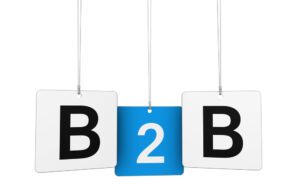 Katie Martell presented “30+ Ways to Create B2B Buzz” at B2B Connect to Convert.
Katie Martell presented “30+ Ways to Create B2B Buzz” at B2B Connect to Convert.
Let’s be honest.
B2B buyers don’t do business with companies they’ve never heard of. Some business leaders mistakenly believe that if they build a great product, it’s enough to earn the recognition they’ll need to earn customers and grow.
But merit alone does not a market leader make.
If your existing marketing efforts just aren’t breaking through, it might be time to create some buzz.
Traditional marketing is meant to generate awareness of your brand, but buzz happens when people are talking about your ideas. There are three common reasons companies fail to create buzz.
- You’re not acting like an ascending brand
“Act the way you’d like to be and soon you’ll be the way you act.”—Leonard Cohen (RIP)
If you want to be a market leader, act like a market leader.
If you want to disrupt the market, act like a disruptive brand.
Market leaders and disruptive B2B brands set the agenda of their space—not only in what features they build, but how the market thinks and talks about their category. These brands have the ability to influence the overall narrative because they are confident in their point of view, and highly strategic in how they make that POV heard.
In spaces that are fast-moving and full of confusion (hello, martech), ascending brands are those that continuously lead with assurance in their world view. They are relentless in their ability to publish opinions, thought leadership, and guidance that create a kind of crescendo effect as their ideas take hold.
Adam Morgan introduced us to the concept of a “challenger brand” in the late nineties with his book, “Eating the Big Fish.” In it, he describes a challenger brand as meeting three particular criteria:
- State of market (not yet a market leader nor a niche brand)
- State of mind (ambitions beyond conventional marketing)
- Rate of success (significant and rapid growth)
Like a challenger brand, an ascending B2B brand shows continued growth and momentum, punches above its weight against often larger competition, and operates with a sense of ambition that is reflected in the thoughts it puts into the world.
Important note: Ascending brands don’t achieve momentum without a killer, solid, remarkable product. Nothing kills a bad product faster than good marketing.
In contrast, descending brands sit still, off the radar. They stagnate. To stakeholders like prospective buyers, investors, and partners, if you’re not seen to be growing or otherwise moving in the right direction, you’re doomed. Momentum, in business, is everything.
Descending brands are dangerous.
- You’re part of the noise
Say something different.
All too often, “thought leadership” is conflated with the same messaging that inhabits product collateral.
Done correctly, thought leadership is worth doing. According to a recent study, 63% of B2B decision makers feel thought leadership gives a sense of the type and caliber of thinking an organization is likely to deliver.
But, just 14% said that the overall quality of most of the thought leadership they read is “very good” or “excellent”, with twice as many (26%) feeling that it’s “poor” or “mediocre.” The largest portion—six in 10—find it just “good.”
This is meh. This is mediocre. This is simply adding to the massive amount of noise in the industry. The majority of buyers feeling overwhelmed with information, and it’s no wonder why.
Ask yourself: Are we adding to the noise? Or are we truly adding value?
There’s a big difference between “thought leadership” and “uninspired thought.” You know it when you see it. (And your buyers ignore it when they see it.)
- You haven’t given buyers a reason to think differently.
This is the big one.
Buyers hate change, even if it’s good for them.
All humans hate change.
One reason for this is that the effects of change are really hard to visualize in a buyer’s mind. What makes them move is pain.
We know this, at least anecdotally, but it rarely translates to the content we publish or the efforts we put into buzz-building and PR.
Your solution only fits into the framework of a buyer’s mind once it addresses where they are, today. B2B consultant and author Ardath Albee calls this place the status quo. It refers to however a buyer is solving their problem today. It could be a competitor, or it could be a workaround.
For example, if you’re marketing an analytics tool, you’re likely challenging the status quo of using Excel spreadsheets. If you’re selling a cloud platform, you’re challenging the status quo of relying on on-premise software. You get the idea.
It’s only once you’ve introduced a reason to challenge this status quo that you’re set up to propose a solution.
Without that initial dispute, friction, or provocation about the way things are done today, your buyer is simply not in the right state of mind to consider a new POV.
You’ve got to give them a problem worth caring about. For many B2B brands, this is the crux of an effective thought leadership messaging framework, in which they answer questions like:
- What’s wrong with the way things are happening today?
- What’s the impact?
- Why should I (the buyer) care?
A buyer is far more receptive to your proposed solution when you’ve spoken directly to a pain. Touting “what could be” in your marketing efforts is simply not as effective at motivating buyers as explaining why the status quo is a threat.
If you’re failing to include that dimension in your marketing, well, chances are you’re not getting much attention.
Katie Martell is an on-demand marketer.



 Network
Network

